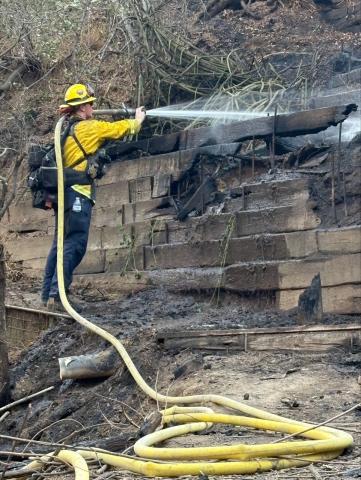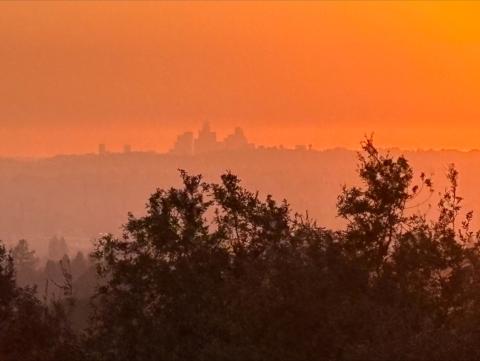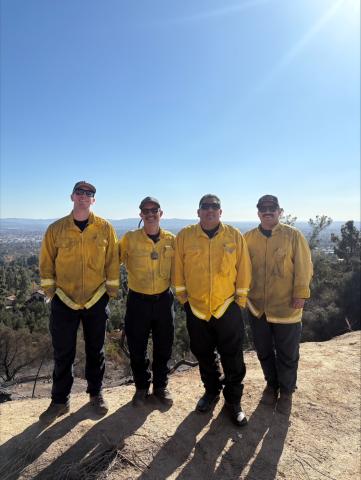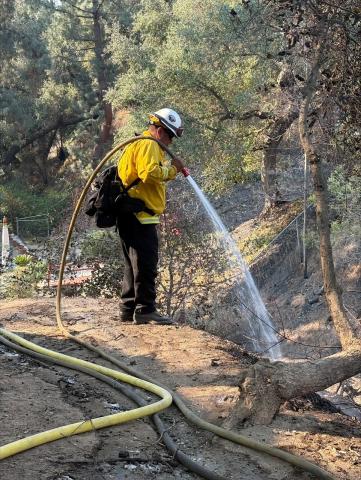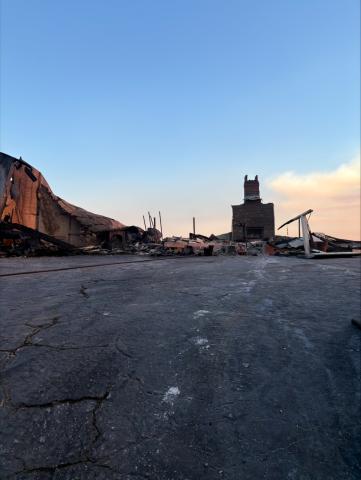During the recent rash of devastating fires in Pacific Palisades, Altadena and surrounding areas, fire crews from across the western United States responded to support local fire crews that were battling the Palisades, Eaton and Hughes fires along with some smaller ones.
Soboba Fire Department was on the scene helping crews fighting the Eaton Fire from Jan. 8 to Jan. 16, when they returned home. Additional support and resources allowed for quicker containment for small fires and significant progress in containment at the larger fires across the region.
Soboba Fire Chief Glenn Patterson said requests for assistance are managed by Cal-OES, utilizing the statewide mutual aid system. “This request came from our dispatch center who was contacted by the OES regional coordinator,” he said. “Whoever is on duty goes when the request comes in and we call back personnel to fill behind.”
It is up to Patterson to approve or deny all mutual aid requests based on the availability of resources and personnel. “I keep in contact with the personnel out on assignment and arrange for any needs and coordinate personnel swaps as needed,” he said.
One engine with three crew members and one Chief Officer was deployed to the Eaton Fire, Division “Juliette,” which was in Sierra Madre. One of those crew members was Soboba Fire Training Battalion Chief Howard Maxcy Jr.
“I think just seeing the devastation of all those homes destroyed and seeing families every day at the roadblocks wondering if their homes were still standing was the worst part for me personally,” Maxcy said. “Our assignments included patrolling the areas for hotspots and helping to identify homes that had been damaged and reporting those addresses to our division group supervisor.”
Patterson said both wildfires and structure fires have their challenges. “The biggest difference is that most structure fires are confined to a building with walls so you usually have a fairly good idea on where the fire can/will go,” he said. “Wildfires are dynamic and constantly changing based on fuel, weather, and topography.”
He said wildfires move much faster and require many more resources but structure fires are difficult when so many houses are burning or threatened, and they can’t save them all.
Soboba Fire Captain John Hines was also on the crew that responded to the mutual aid call. “Our base camp started at the Rose Bowl in Pasadena,” he said. “Duties we performed included structure protection for houses in Sierra Madre that were unburned. I am happy to report that our division saved multiple houses from burning, although we did lose a few. Other duties included recovery missions to locate missing individuals, and unfortunately, we did find a few individuals that did not make it.”
The crew also laid thousands of feet of fire hose to save properties and removed brush away from structures. They also performed public relations duties with all of the displaced individuals, answering questions from the residents and public that were encountered throughout their mission.
“The worst part of the experience at the Eaton fire was to see the magnitude of the devastation of houses and property,” Hines said. “I can safely say this was the worst I’ve seen in over 30 years in the fire service and going to big campaign fires.”
The Eaton Fire burned a total of 14,021 acres and destroyed 9,418 structures, including homes, businesses, schools, and houses of worship through the Altadena, Pasadena and Sierra Madre areas before being fully contained. Maxcy said that helping the same residents day in and day out with their fire prevention needs was a positive take away from the experience.
Hines said the outpouring of support from surrounding communities and the public in general was amazing. He said the generosity was very heartfelt, for example, bringing hot food and drinks for all of the first responders from out of the area.
“Being able to witness how the community came together to support the fire victims was an awesome thing to see; the community brought everything from toothbrushes, sleeping bags, beds, clothes, etc.; you name it, people brought it,” he said. “Having the opportunity to run into many other fire agencies that were from throughout the western United States, and running into many other firefighters who have moved on to other departments that had started at Soboba was a good thing.”
Photos courtesy of the Soboba Band of Luiseño Indians


